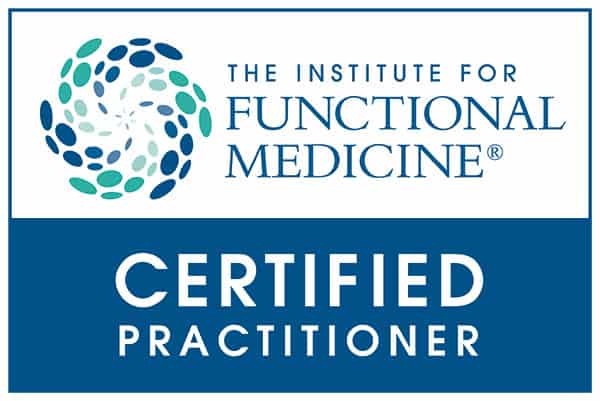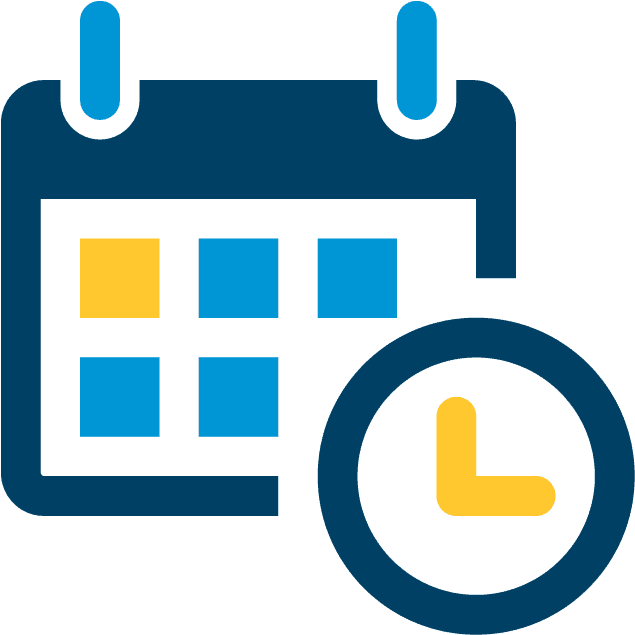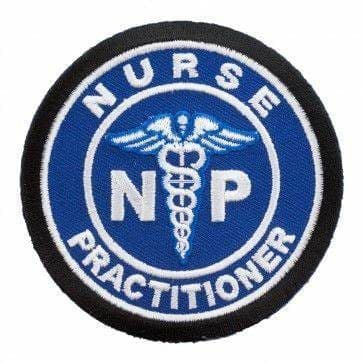
by Dr Alex Jimenez DC, APRN, FNP-BC, CFMP, IFMCP | Diets, Fitness
If you plan to become a road warrior this summer, make sure you’ve got the right fuel for your body as well as your vehicle. Packing healthy snacks can keep your motor running until you reach the next pit stop.
We’ve asked top nutritionists to select savvy and savory snacks you can easily take with you on your next trip that your whole family will love
Energy bars. “Remember that not all energy bars are created equal,” says Amy Shapiro, a registered dietitian and founder of Real Nutrition NYC. “I like RX Bars, Health Warrior Chia Bars, and Kashi Bars.” Nutritionist Tara Gidus Collingwood tells Newsmax Health that she loves Raw Macaw bars that you can purchase readymade or design your own personal bar according to your taste.
Jerky. Chewy, savory turkey or beef jerky can satisfy a variety of appetites and is readily available at nearly every minimart or truck stop along the way. Look for brands that have the lowest sodium and fat content.
Cut up veggies, fruit. Shapiro tells Newsmax Health that these items, stored conveniently in a plastic bag, make an excellent and healthy snack to have on hand to keep hunger at bay and to help you stay hydrated.
Rice cakes, nut butters. Rice cakes topped with delicious, creamy nut butters in handy squeeze packs from Justin’s Nut Butter and other makers will make the whole family happy. They are available in flavors like maple almond butter, chocolate hazelnut butter, and honey peanut butter.
Popcorn. Everyone’s favorite movie snack is also great for road trips. Making your own healthy popcorn ahead of time without adding extra fat or salt is super simple. Brands such as the Little Kernel and Skinny Pop also feature healthier fats and lower amounts of sodium and are easily purchased on the road.
Cheese sticks. Most minimarts stock these handy, individually wrapped snacks in their refrigerator section. Cheese sticks are high in protein and calcium to maintain stamina on the road.
Nuts. Collingwood likes to pack almonds, pistachios, and other favorite nuts to take on the road. She also loves the roasted broad bean crisps with flavors like sweet cinnamon and cocoa dusted.
Fresh and frozen fruit. Dried fruit is too sugary, says Shapiro. Instead she opts for fresh fruit which is readily available everywhere and likes to freeze grapes for her road trips. “They take longer to eat and taste like little bites of sorbet,” she says.
Dry oatmeal. All you need is hot water and a cup to make a meal with dry oatmeal packets, notes Shapiro. “Add in some nuts or chopped fruit and you have a balanced meal.” You can also bring packets of dry cereal along to serve with milk that’s also readily available en route.
Hummus. Here’s another healthy filling snack that’s rich in protein and fiber as well as iron, folate, and B vitamins. Keep a tub of hummus in the cooler along with storage bags of prepared raw vegetables. Sabra also sells individual tubs of hummus.
Chia squeeze pouches. When you need a delicious pick me up along the way, try one of the new organic chia squeeze pouches with flavors like cherry beet, blackberry bliss, mango coconut and wild raspberry. You can buy the travel ready packs online at Amazon or at your local grocery store.
Dark chocolate. Collingwood admits she’s a chocoholic. “I will always bring a few individually wrapped squares of dark chocolate to be prepared when my sweet tooth strikes,” she says. Try keeping them in the freezer before you embark upon your journey and keep the chocolate cold and yummy in a cooler along the way.
Greek yogurt. “I will often pick up a yogurt at a gas station or airport store,” Collingwood says. All yogurts are good sources of calcium, potassium, protein, and B vitamins. Sprinkle on nuts or fresh fruit for extra nutrition.
Hard-boiled eggs. Sometimes called the perfect protein, eggs contain all the essential amino acids you need. Hard boil a few before your departure so you’ll have them on hand. You can also find them in the refrigerator section of gas station snack center.
Seltzer water. Your hunger craving may simply signal the need to hydrate. While water is fine, it’s a treat to opt for flavored, zero-calorie seltzer waters like La Croix and Dasani. You may also want to pack a sports drink, like Gatorade, to keep your electrolyte levels in balance especially when you traveling during hot summer months. Gatorade or a similar beverage is also easily found on the road.
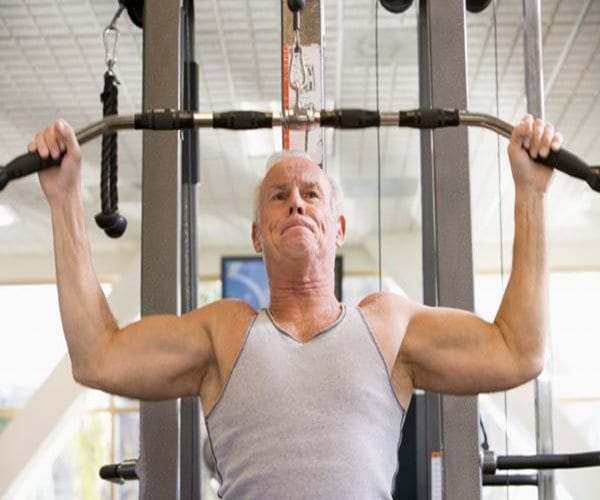
by Dr Alex Jimenez DC, APRN, FNP-BC, CFMP, IFMCP | Diets, Fitness
Middle aged adults who do even a small amount of regular strength training exercise may be lowering their risk of so-called metabolic syndrome – itself a risk factor for both heart disease and diabetes, a recent study suggests.
People with at least three unfavorable health stats from a list that includes large waist size, high blood pressure or triglycerides, high blood sugar or low “good” cholesterol are said to have metabolic syndrome, and are at increased risk of going on to develop diabetes, heart disease or both.
But researchers found that when generally healthy people did strength-building exercise for less than an hour a week they had 29 percent lower odds of developing metabolic syndrome than their peers who did no resistance exercise.
“You already get health benefits with even a low amount of resistance exercise per week, which is good news for people with a very busy lifestyle,” said lead author Esmee Bakker of Radboud University Medical Center in Nijmegen, The Netherlands.
An estimated one-third of U.S. adults have metabolic syndrome, the authors write in Mayo Clinic Proceedings. Although previous studies have reported how aerobic exercise, such as running, walking and swimming, reduce metabolic syndrome, few studies have looked at resistance exercise alone.
The U.S. government’s Physical Activity Guidelines for Americans suggest that adults should do “muscle-strengthening activities that are moderate or high intensity and involve all major muscle groups on 2 or more days a week” and aerobic exercise 150 or more minutes each week.
“A modest amount of resistance exercise, such as two 30-minute sessions per week, has beneficial effects,” Bakker told Reuters Health by email. “We think that resistance exercise, in addition to aerobic exercise, should be included in standard medical recommendations to prevent metabolic syndrome.”
Bakker and colleagues analyzed data on more than 7,400 people who participated in medical examinations at the Cooper Clinic in Dallas, Texas, between 1987 and 2006. They ranged in age from mid-30s to mid-50s at the time of their examinations.
The research team found that 1,147 participants, or 15 percent, had developed metabolic syndrome during the follow-up period. Meeting the resistance exercise guideline of two or more days per week reduced risk of metabolic syndrome by 17 percent overall, compared to doing no resistance exercise. Those who met both aerobic and resistance training guidelines had a 25 percent lower risk of developing metabolic syndrome.
“This result was independent of other healthy behaviors, such as not smoking,” Bakker said. “It also made little difference if people did resistance exercise only on weekends or spread throughout the week.”
Bakker and colleagues plan to study the effect of resistance training on other health outcomes, such as the heart health benefits of a one-year resistance exercise training program. They also want to examine the long-term effects of different types and intensities of strength training on metabolic syndrome.
“The real next step is to see how we can get people to exercise,” said Paul Thompson of the University of Connecticut in Hartford, who wasn’t involved with the study.
“We can talk about the right dose and intensity, but it’s clear that in most studies, doing something is better than nothing,” he told Reuters Health by phone. “Most people do nothing, and the key is to get them to do anything.”
One limitation of the study is that it relies on self-reported survey data, which could bias the results. Thompson also cautions that some patients of the Dallas clinic are relatively more affluent than the rest of the country, so the results might not apply more generally.
“The increasing American girth has increased metabolic syndrome, which leads to insulin resistance and makes it harder for insulin to work,” he noted.
Thompson is studying how exercise affects people who have a tendency toward metabolic syndrome and ways they can work against a genetic disposition toward diabetes and hypertension, for example.
“Everybody should have some exercise,” he said. “Play with the dog or grandkids, do yard work or go for a walk. Just do something for 30 minutes every day.”

by Dr Alex Jimenez DC, APRN, FNP-BC, CFMP, IFMCP | Diets, Fitness
People who complain that they only have to smell food to gain weight may be right. Researchers at the University of California, Berkeley, found that obese mice who lost their sense of smell also lost weight. That part of the study was no surprise. But the strange part of the study found that mice that retained their sense of smell ballooned to twice their normal weight by eating the same amount of fatty food as the mice with no sense of smell.
Stranger still is that mice with a superior sense of smell gained even more weight on the same high-fat diet than the mice with a normal sense of smell.
The findings, which were published in the journal Cell Metabolism, suggest that the odor of what we eat may play an important role in how the body deals with calories. If you can’t smell your food, you may burn it rather than store it. But simply being able to smell your food may pack on the pounds.
Scientists know that humans who lose their sense of smell due to age, strokes, or diseases such as Parkinson’s, often become anorexic. They theorized that the loss of pleasure in eating can lead to depression, which can cause loss of appetite. But the new study suggests that the loss of smell itself plays a role in how the body uses energy.
For the study, researchers used gene therapy to destroy olfactory neurons in the noses of adult mice. They spared stem cells, however, so that the loss of smell was only temporary and lasted for about three weeks before the olfactory neurons re-grew.
The smell-deficient mice rapidly burned calories by reregulating their sympathetic nervous system, which is known to increase fat burning. The mice turned their beige fat cells, the subcutaneous fat storage cells that accumulate around our thighs and midriffs, into brown fat cells, which burn fatty acids to produce heat.
Some mice turned almost all of their beige fat into brown fat, becoming lean, mean fat-burning machines.
In these mice, white fat cells — the storage cells that cluster around our internal organs and are associated with many health problems — also shrank in size.
Although it would be a drastic step to eliminate smell in humans wanting to lose weight, Andrew Dillin, senior author of the study, said it might be a viable alternative for the morbidly obese contemplating stomach stapling or bariatric surgery.
“For that small group of people, you could wipe out their smell for maybe six months and then let the olfactory neurons grow back, after they’ve got their metabolic program rewired,” he said.
One problem is that the loss of smell was accompanied by a large increase in levels of the hormone noradrenaline, which is a stress response tied to the sympathetic nervous system. In humans, such a prolonged rise in this hormone could cause a heart attack.
But stomach stapling and bariatric surgery are also associated with problems. A study published in Surgery for Obesity and Related Diseases found that one in five patients who undergo bariatric surgery for weight loss is likely to develop problems with alcohol.
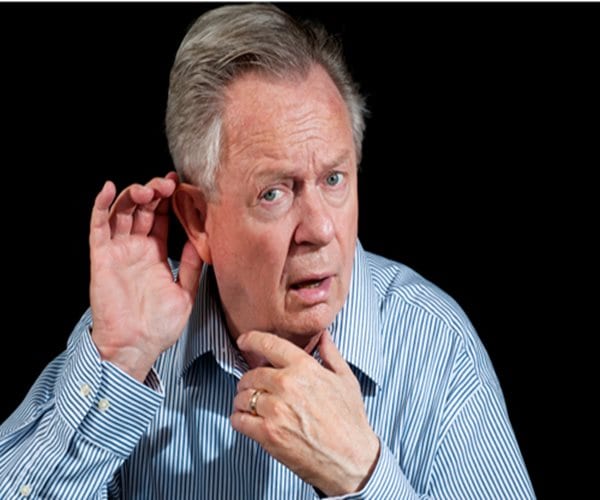
by Dr Alex Jimenez DC, APRN, FNP-BC, CFMP, IFMCP | Anti Aging
A handful of over-the-counter “personal sound amplification products” fared as well as an expensive hearing aid in helping people pick up more words in conversation, researchers report.
While the study took place in a sound booth, “in this controlled environment, some of these devices helped people with mild to moderate hearing loss as well as a hearing aid,” said study author Nicholas Reed. He is an audiologist at Johns Hopkins School of Medicine, in Baltimore.
An estimated 16 percent of Americans have trouble hearing, and the U.S. National Institute on Deafness and Other Communication Disorders estimates that almost 30 million people could benefit from hearing aids.
But hearing aids can cost thousands of dollars, and Medicare doesn’t cover them, the researchers noted.
“Hearing aids are regulated medical devices and should all be able to aid someone with hearing loss,” Reed said. “While not all hearing aids are the same, they should all be able to meet this minimum requirement of making sound louder at appropriate frequencies and with minimal distortion.”
In contrast, personal sound amplification products, available at stores and online, aren’t regulated and can’t be marketed as hearing aids. The U.S. Food and Drug Administration says they’re supposed to be used by people without hearing problems to help them hear distant sounds. The devices fit in or around the ear and make use of Bluetooth technology.
People do use the devices as hearing aids, however, said Todd Ricketts, vice chair of graduate studies with the department of hearing and speech sciences at Vanderbilt University Medical Center in Nashville. But these products tend to be less technologically advanced than hearing aids, although some offer advanced features.
Should you go out and buy one of the amplification devices instead of getting a hearing aid from a hearing specialist? Some audiologists will refuse to fit you for one, and the U.S. government doesn’t consider them appropriate for people with hearing loss.
For the study, researchers recruited 42 patients at a university audiology clinic who had mild to moderate hearing loss. Two-thirds were women, and their average age was 72.
In a sound booth, the participants listened to sentences with “speech babble noise” in the background. The participants tried to understand what was said without any hearing assistance; while using a hearing aid (costing $1,910); and while using personal sound amplification products bought online and at a pharmacy (one was $30, and the others cost between $270 and $350).
The researchers measured the average accuracy — the percentage of the time that the participants understood the sentences. It was 77 percent without a hearing aid, 88 percent with the hearing aid, and 81 to 87 percent with four of the amplification devices (Sound World Solutions CS50+, Soundhawk, Etymotic Bean and Tweak Focus).
“The results suggest that the devices are technologically and objectively capable of improving speech understanding in persons with hearing loss,” Reed said.
A fifth amplification device, the $30 MSA 30X Sound Amplifier, scored the worst, with an average accuracy level of 65 percent, the researchers reported. Reed said the device caused distortion.
Reed added that the findings suggest that both hearing aids and the amplification devices should be regulated and available over-the-counter. In that case, he said, “the FDA would set technical standards for all of these devices.”
For now, he said, adults with mild to moderate hearing loss may want to consider using one of the devices and consult an audiologist if needed to adjust it.
Ricketts cautioned that “the downside of just trying these or ordering them is that they may not be appropriate. People aren’t very good at self-diagnosing how much hearing loss they have.”
That’s where an audiologist could be helpful, he said, but some won’t sell these devices.
The study was published in the July 4 issue of the Journal of the American Medical Association.

by Dr Alex Jimenez DC, APRN, FNP-BC, CFMP, IFMCP | Natural Health, Wellness
As long as it doesn’t take more than 30 minutes to an hour, a nap is good for our health in many ways. It’s perfectly natural for mammals and is even part of the work culture in China. Why not take advantage of the warm, relaxing weather to have a little snooze after lunch? Here’s a list of all the benefits of a short siesta.
– A healthier heart
A nap is beneficial for the heart because it lowers blood pressure and allows the cardiovascular system to recover. Two hormones, adrenalin and noradrenalin, which help to keep the body awake, stimulate the heart rate. A Greek scientific study in 2007 showed that a habitual 30-minute nap (three times a week) reduced the risk of death by heart failure by over 30%. Try it out this summer to improve your sports performance.
– Boosting creativity
By improving attention, memory and vigilance, a nap stimulates creativity and helps with solving difficult problems. It is virtually obligatory in Japan, and other countries are beginning to realize its benefits. Employees who rest at the beginning of the afternoon are more productive and come up with new ideas more easily. A summer nap is ideal for recharging your batteries and will pay dividends when you go back to work.
– Catching up on lost sleep
Chronic insomnia, drowsiness, and sleep debt are all part of modern life. There’s nothing like a power nap to catch up if you didn’t get enough sleep last night. And contrary to popular belief, a nap does not prevent you from sleeping the next night (as long as it doesn’t last longer than an hour). In fact it helps nocturnal sleep. It’s the perfect way to stay alert and in a good mood until the evening.
– Improving immunity
A lack of sleep affects antiviral proteins produced by the immune system. And sleep deprivation is associated with lower resistance to infections. Even a short nap restores the levels of hormones and proteins which help fight stress, thereby improving our immune system. Nap to your heart’s content this summer, so you’ll be able to drive out colds and viruses in the fall.
– A perfect non-drug treatment
The French National Institute of Sleep and Vigilance (InSV) considers sleep to be a non-drug treatment with analgesic effects. Migraines and muscular/joint pain can be improved by a short sleep. The InSV says that napping could reduce the need for medicines such as antihypertensives (a treatment for high blood pressure), stimulants and vitamins. Better to take 40 winks this summer instead of a cocktail of dietary supplements in the fall.

by Dr Alex Jimenez DC, APRN, FNP-BC, CFMP, IFMCP | Anti Aging
Is your idea of a balanced diet chocolate in both hands? If so, you may be onto something — at least as far as your brain is concerned, according to a recent review published in Frontiers in Nutrition. Cocoa beans, it found, are a rich source of flavanols, a class of compounds that has neuroprotective effects.
Italian researchers studied available literature on the effects of cocoa flavanols on the brain — what happens to your brain in the hours immediately following eating cocoa, and what happens when you eat a cocoa flavanol enriched diet for a prolonged period of time.
They discovered that most randomized controlled trials found that cocoa flavanols had a beneficial effect on cognitive performance. Participants showed enhancements in working memory performance and improved visual information processing after having had cocoa flavanols.
For women, eating cocoa after a night of total sleep deprivation actually counteracted the cognitive impairment that such a night brings about. The results are promising for people who suffer from chronic sleep deprivation or work shifts.
The effects of relatively long-term ingestion of cocoa flavanols, ranging from five days to three months, has generally been investigated in elderly individuals. For them, cognitive performance was improved by a daily intake of cocoa flavanols.
In the elderly, factors such as attention, processing speed, working memory, and verbal fluency were greatly affected, and were most pronounced in older adults with mild cognitive impairments.
“This result suggests the potential of cocoa flavanols to protect cognition in vulnerable populations over time by improving cognitive performance,” said authors Valentina Socci and Michele Ferrara from the University of L’Aquila in Italy.
“If you look at the underlying mechanism, the cocoa flavanols have beneficial effects for cardiovascular health and can increase cerebral blood volume in the dentate gyrus of the hippocampus,” they said. “This structure is particularly affected by aging and therefore the potential source of age-related memory decline in humans.”
So should we eat chocolate every day to improve our brains? “Regular intake of cocoa and chocolate could indeed provide beneficial effects on cognitive functioning over time,” said the authors.
“There are, however, potential side effects of eating cocoa and chocolate,” they warned. “Those are generally linked to the caloric value of chocolate, some inherent chemical compounds of the cocoa plant such as caffeine and theobromine, and a variety of additives we add to chocolate such as sugar or milk.”
Nonetheless, the scientists practice their results: “Dark chocolate is a rich source of flavanols. So we always eat some dark chocolate. Every day.”
Recent studies have found that chocolate has additional benefits. British researchers found that magnesium, an essential nutrient found in dark chocolate, helps cells keep track of the natural cycles of day and night.
Need an energy boost? Dark chocolate containing at least 60 percent cacao beans can enhance your energy levels in the afternoon. Volunteers at the University of Northern Arizona University ate dark chocolate or a placebo product, then did thinking and memory activities while undergoing EKGs of their brains. Those who ate the chocolate were more alert.
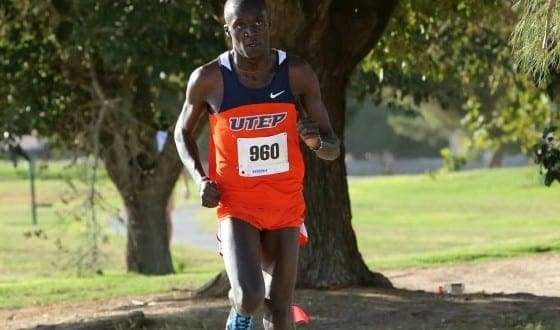
by Dr Alex Jimenez DC, APRN, FNP-BC, CFMP, IFMCP | UTEP (Local) RSS
UTEP’s Anthony Rotich | Photo Courtesy UTEP
Staff Report June 20, 2017 358 Views
IRVING, Texas – Anthony Rotich (Cross Country) was announced as one of the 14 recipients of the Jim Castaneda Postgraduate Scholarship Award, announced by the league office on Tuesday afternoon.
The conference annually awards the $4,000 Postgraduate Scholarships to graduates as selected by the C-USA Faculty Athletics Representatives and approved by the Board of Directors.
Rotich, a civil engineer major and mathematics minor, graduated from UTEP as a three-time C-USA All-American honoree and a four-time C-USA Commissioner’s Academic Honor Roll recipient. The Kenya native was a four-time NCAA Champion and an 11-time Mountain Region Athlete of the Year. He was named the 2014 C-USA Cross Country Athlete of the Year.
Rotich is applying to UTEP’s College of Engineering – Construction Management.
Check Also
UTEP softball head coach Tobin Echo-Hawk announced the addition of pitcher Kira McKechnie on Wednesday. …




